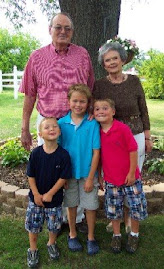During my tenure as a dish washer, I would walk to work each day and being a tall, mature-looking individual, was hooted at and called 4-F (short for draft- dodger) by the soldiers and sailors passing by on the trains on their way to war. The draft was in effect and I was two years away from being old enough to even register for it. This was a system that, once you became sixteen, you had to register with the draft board and they would call you when you were needed and when you became old enough for induction into service. It was difficult to wait, but I had no choice.
While working in the restaurant, which happened to be the Midway Lunch, one of my jobs was to check in merchandise that was delivered at the rear door. I will never forget the day that Tommy Earle and Thomas Pruitt were delivering Coca-Colas and I became so impressed with their green uniforms and the little leather bow ties they wore. I asked Tommy if I might get a job at Coca-Cola and he suggested I interview with Mr. Whitehurst, the sales manager. Being 14 at the time and having learned that the minimum age limit for employment there was 15; I quickly decided to lie about my true age and told Mr. Whitehurst I was 15. He wanted proof and in order to provide the proof, I found one of our Bibles with my birth recorded and I carefully altered it to show that I was born in 1926 rather than 1927. He accepted that and I was on my way for a career with Coca- Cola.
I started by feeding the bottle washer, which was called the ‘soaker’. That was one of the dirtiest jobs of my lifetime. The skin between my fingers would actually wear down to the bone. Mr. Joe Hardy, the superintendent that everyone referred to as Mr. Joe would simply wrap some band-aids around my fingers and I just kept on working. During times when there were no bottles to wash, we would spend our time opening and cleaning tin cans that were shipped off to make bottle caps. These cans were collected from various restaurants and were necessary due to the war and the need for the military to use all metals available for ammunition.
Coca-Cola and other soft drinks along with many other things such as shoes, sugar, gasoline, butter and meats, to name a few, were also rationed. There was one exception that made me feel proud and that was Coca-Colas for the military. We had the opportunity of sending a complete semi-trailer load over seas and all the employees were photographed with it prior to departure.
Figure 17 - Coca-Cola shipment from Danville to boys overseas [1943] [Henry Dillard pictured 4th from left]
It was a proud day in my life, especially with my desire to enter the military before the war was over. Prior to this, however, I was to spend a lot of time doing extremely hard work for long hours at a very low wage rate. My starting rate was 30 cents per hour and after six months; I received a 2 cent increase. I don’t recall how many more increases I received, but they were few and far between. The upside of the low pay was the realization that you could work just about all the hours you wanted and received time and one-half for any excess over 40 hours. My pay during this period would usually come to around $18 or $20 per week. I finally became a route man and assumed the responsibility of route number one, which was in downtown Danville, and was without a doubt the hardest one available. I really loved it since I finally had the opportunity of wearing that beautiful green uniform with that sharp looking leather bow tie. As my grandson Seth would say, “I was really cool.”
Although rationing was bad for most people, it did not affect me so much. Since Coca-Colas were rationed, as was gasoline, I worked out a deal with one of my customers, Luther Gibson, who ran an Amoco station on South Main Street. He let me have the gas and I let him have the Coca-Colas. One Saturday, while on the way to Luther’s station to get gas, I ran out of gas one block away and walked the rest of the way. I got 2 gallons in a can and walked back to my A-Model Ford. Since the gas entry is on top of the hood right next to the windshield and I had no funnel, some of the gasoline spilled over and went down on the engine. When I got in and hit the starter the engine caught fire and was spreading fast. I saw a fire alarm on a utility pole and pulled it. Five minutes later there were about four fire trucks, including the hook and ladder wagon and Fire Chief Long who was an acquaintance of mine. They put out the fire and the Chief asked what happened. I told him and he said that it was illegal to buy gas in a can and it was illegal for Luther to sell it to me. This was frightening to me, but he was very kind in not reporting it to anyone else.
He looked at the car that was still smoldering and with all four tires melted from the heat and asked what I intended to do with it? He laughed when I said I would drive it home. I got in the car and sat on the ashes of the seat and cranked it. It sputtered and sputtered, but I drove it home, which was about 5 miles on 4 flat tires, and it sat in the yard until finally I gave it to an automobile junk dealer.
Sunday, December 25, 2005
Subscribe to:
Post Comments (Atom)

No comments:
Post a Comment